|
|
Racial images on magic lantern slides. part 6. |
|
|
||||||||||
| Go to: | part 1 | part 2 | part 3 | part 4 | part 5 | part 6 | part 7 | part 8 | part 9 | part 10 |
|
|
||||||||||
|
This item includes words or images that may be racially or otherwise offensive. They
are included here as historical reproductions from a different period with
different standards, and do not indicate any support or approval
of such ideas and statements by the webmaster/author of this site. They show the role that non-western figures often played in magic lantern stories and the way they were depicted on the slides. |
|
|
By the skin of his teeth. A set of four square magic lantern slides made by an unknown manufacturer. 'Skin of my teeth' is a phrase from the Bible. In Job 19:20 the Bible says: 'My bone cleaveth to my skin and to my flesh, and I am escaped with the skin of my teeth'. In modern times 'by the skin of .... teeth' is used to describe a situation from which one has barely managed to escape. |
|
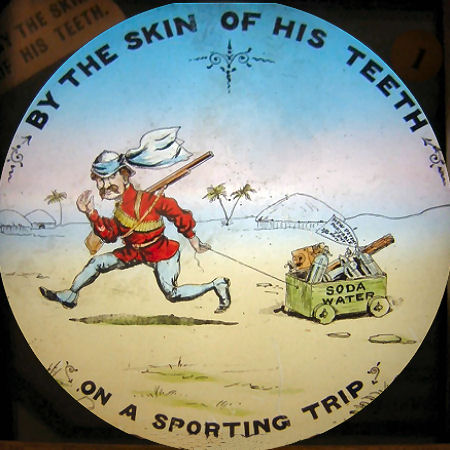 |
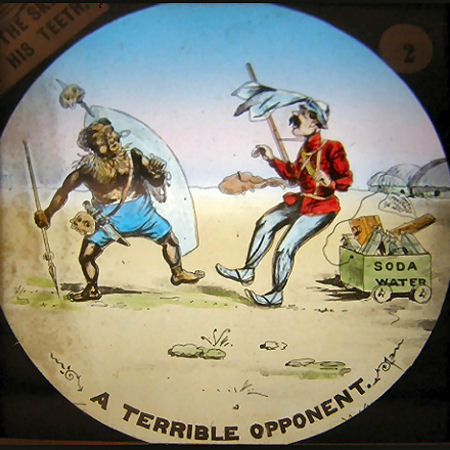 |
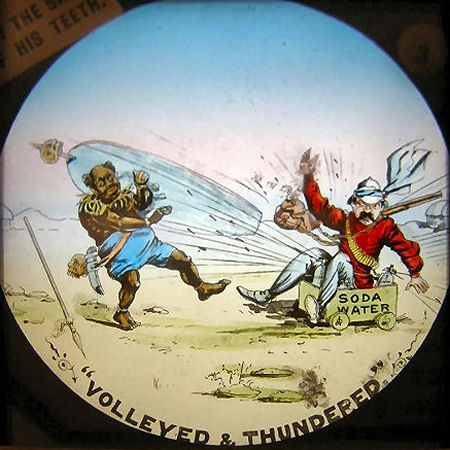 |
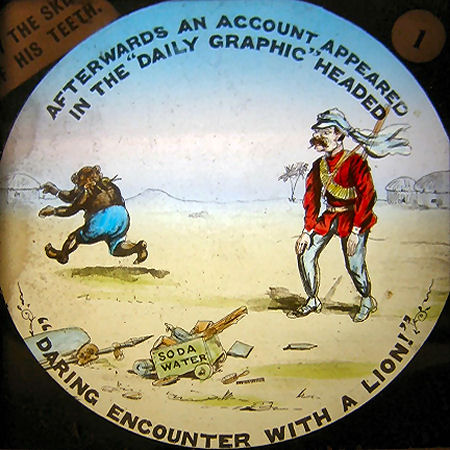 |
 Square magic lantern slide from a set titled 'Shadows', numbered #2. It shows a housewife or maid servant whose shadow on the wall seems to be the image of a slave. Signed CMB. Size of the slide: 8.2 x 8.2 cm. |
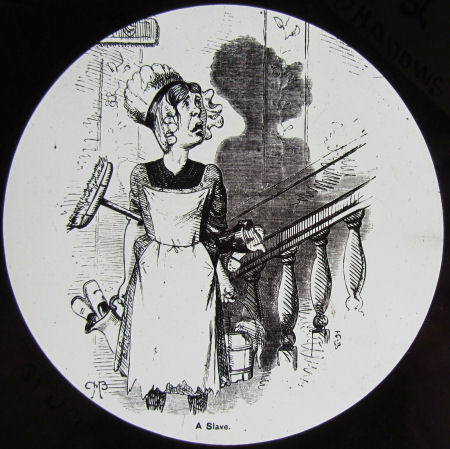 |
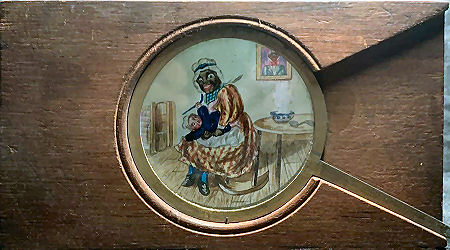 The dimensions of this single lever slide are 17.5 x 10 cm; the diameter of the image is approximately 6.5 cm. Nanny with a naughty child. The child pulls on Nanny's neckerchief to make her bend over. |
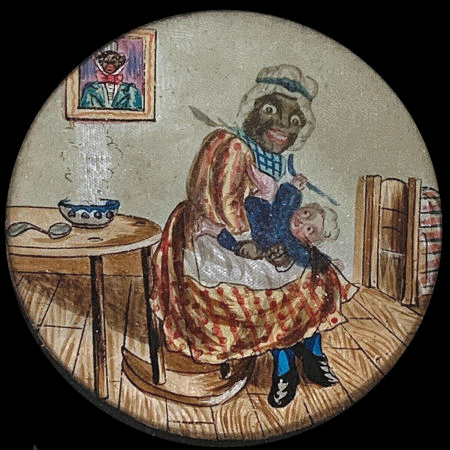 |
 |
 |
 |
|
1. Sambo serenading |
2. Sambo alarmed |
3. Sambo vanished |
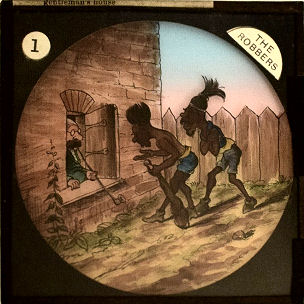 |
The Robbers. A set of twelve square magic lantern slides made by York & Son, England, ca 1885. In terms of drawing style and the cruel story, this series of plates strongly resembles Wilhelm Bush, but this is wrong. The comic was originally published as Münchener Bilderbogen no 498 and was written by Friedrich (Fritz) Steub, entitled 'Der brave Farmer und die undankbaren Wilden'. In the Netherlands it was published as a picture book by the Amsterdam publisher Vlieger as 'De ondankbare Wilden'. |
|
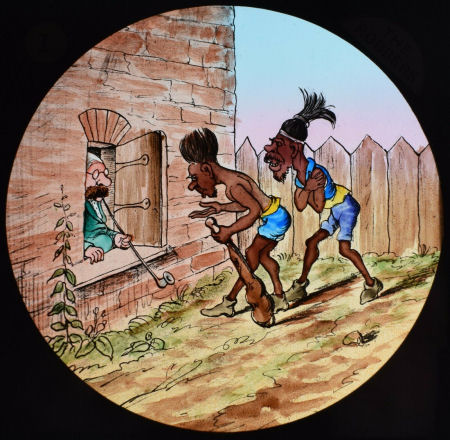 |
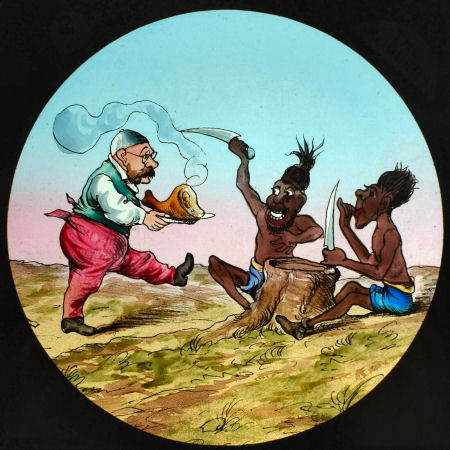 |
||
| 1. Two robbers asking for charity at an old gentleman's house. | 2. He regales them in a sumptuous manner. | ||
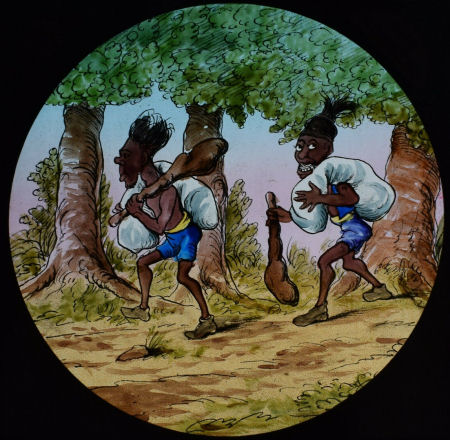 |
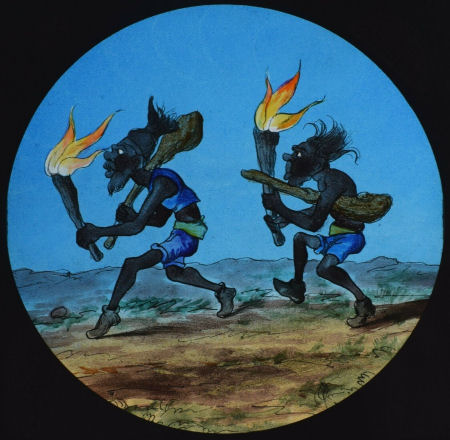 |
||
| 3. He fills their bags with the broken victuals. | 4. They return at night to break into the house. | ||
 |
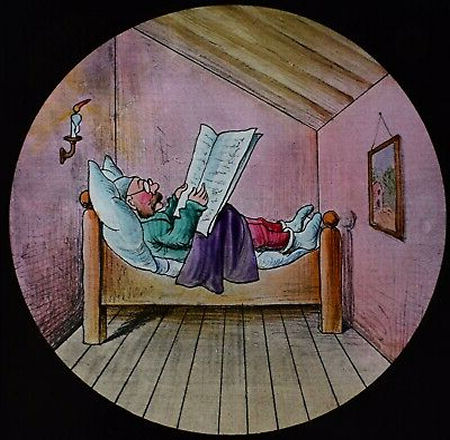 |
||
| 5. They commence the attack. | 6. The old man is quietly reading, and hears the noise. | ||
 |
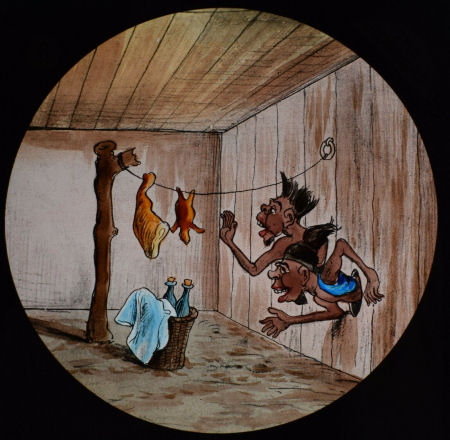 |
||
| 7. He drops from the window to surprise them. | 8. They have succeeded in getting their bodies partly through. | ||
 |
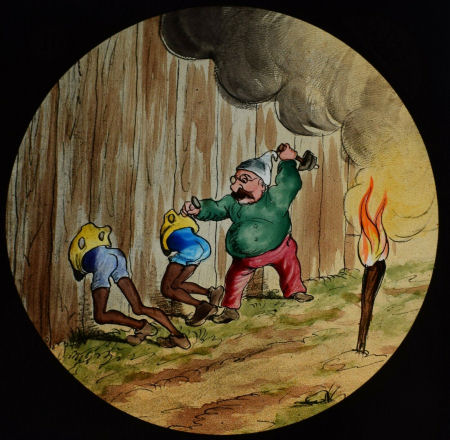 |
||
| 9. The old man comes very quietly round the corner. | 10. He nails them securely to the wall. | ||
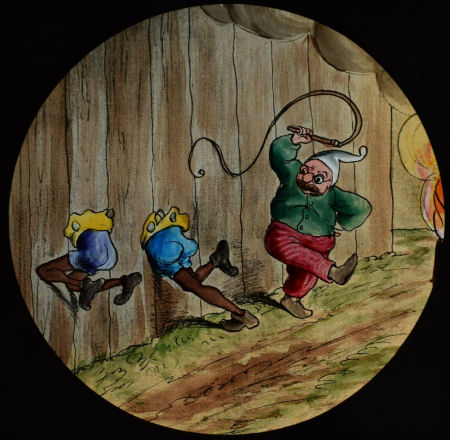 |
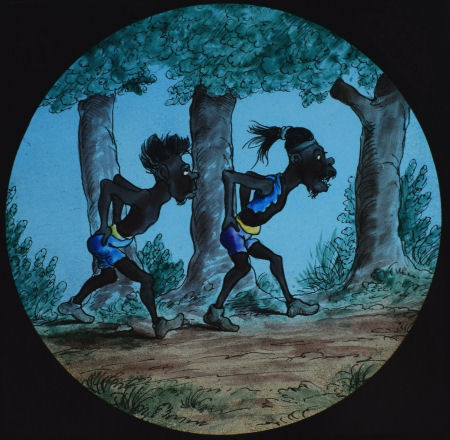 |
||
|
11. He belabours them with his whip. |
12. The robbers go home wiser, and, we hope, better men. |
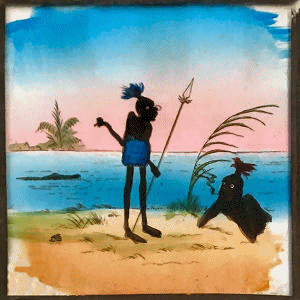 |
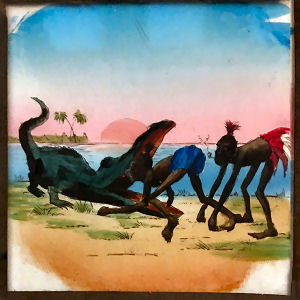 |
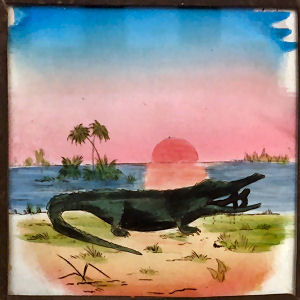 |
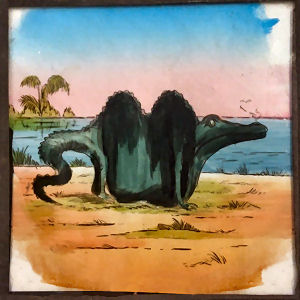 |
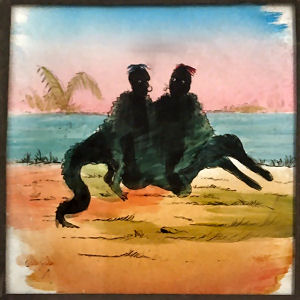 |
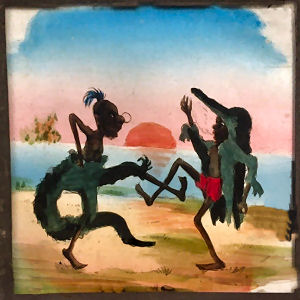 |
|
Two natives are eaten by a crocodile, but
fortunately manage to free themselves. A very unbelievable story, but that
happens more often in magic lantern land. A series of 6 lantern slides, measuring about 8.2 x 8.2 cm. They originally had black paper masks that were removed by a previous owner, probably because they shielded too much of the drawing. The first slide shows what the slide looked like with such a mask. |
||
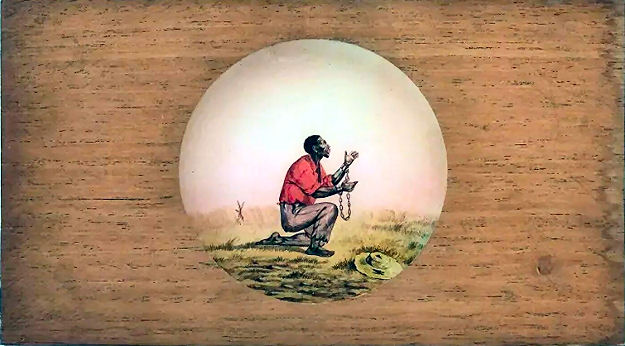 |
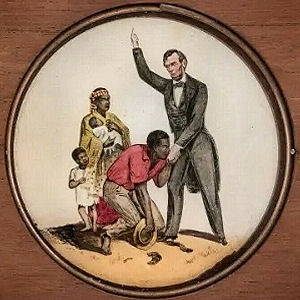
An early, mahogany cased, hand coloured image known as “Freedom to the Slaves” depicting President Abraham Lincoln breaking the chains of African slaves. This rather allegorical image was popular in the period following Lincoln’s Emancipation Proclamation and was viewed at the time as an uplifting and celebratory work of art. The Image features an African American man falling to his knees at the feet of President Abraham Lincoln. The chains of slavery lie on the ground and the man kisses the hand of the President in thanks for his liberation. The man wife and children stand to the left and Lincoln raises his right hand to the heavens as if to proclaim freedom to all the world. |
|
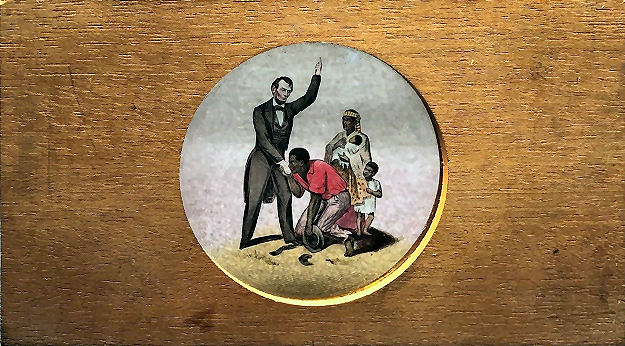 |
||
|
|
||
|
This outstanding Magic Lantern slide measures approx. 18 by
10 cm with the central glass slide area being approx. 7,5 cm in diameter. The
Slide is from a series of views titled “The American Civil War” that was
published shortly after the end of the war. |
||
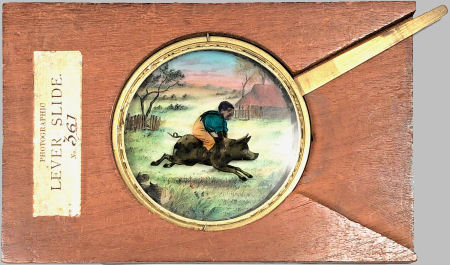 Boy riding a boar. The lever slide is marked with a label: PHOTOGRAPHIC LEVER SLIDE No 367. The manufacturer is unknown. |
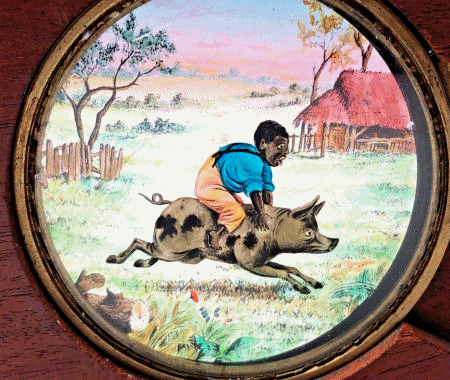 |
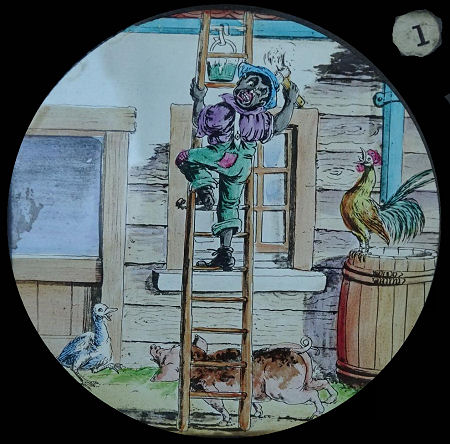 |
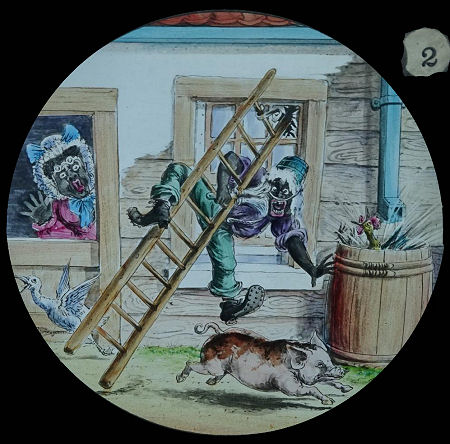 |
|
A pair of 'catastrophe
slides'. These consist of two slides that are usually marked with an A and a
B. They were shown in quick succession to portray a humorous situation. Here we
see a man on a ladder painting the side of his house and falls off when a pig
topples the ladder. |
|
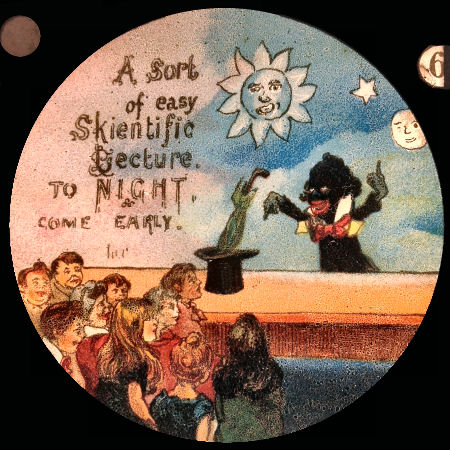 |
 |
|
|
|
|
The Heathen Chinee. Not only black people were sometimes depicted in an unattractive way. This set, made by an unknown manufacturer shows a Chinese cardsharp, who is punished by all those present in the pup. |
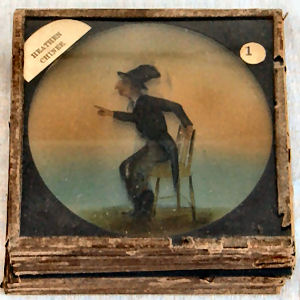 |
|
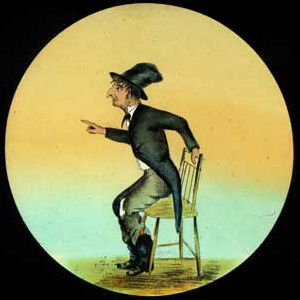 |
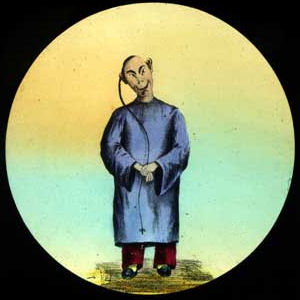 |
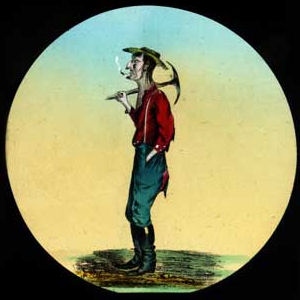 |
| 1. The introduction | 2. That heathen Chinee | 3. Bill Nye |
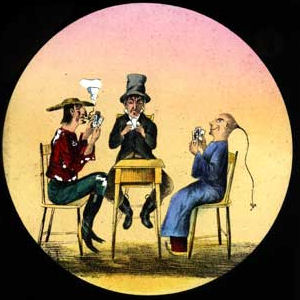 |
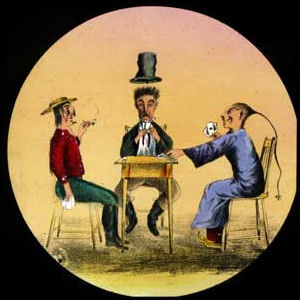 |
 |
| 4. Commencing the game | 5. Ah Sin astonishes the Pair | 6. The rupture |
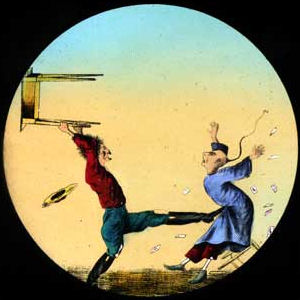 |
 |
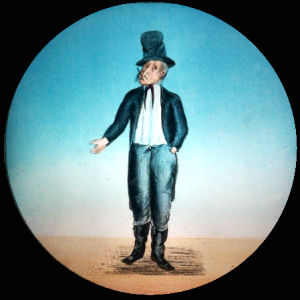 |
| 7. The attack | 8. The final scene | 9. Concluding remarks |
|
"The Heathen Chinee", originally published as "Plain Language from
Truthful James", is a narrative poem by American writer Bret Harte. It was
published for the first time in September 1870 and satirized anti-Chinese
sentiment in northern California.
The poem became popular and was frequently republished. To Harte's dismay, however, the poem reinforced racism among his readers instead of challenging it as he intended. The narrative of the poem focuses on a Chinese immigrant character named Ah Sin who defeats an Irish immigrant named William Nye in a high-stakes game of euchre. Nye is a cheater, whom the "childlike" Ah Sin successfully out-cheats. William Nye realizes nothing until it is too late. Upon realizing he was cheated, William Nye attacks Ah Sin. |
||
And this is a long magic lantern slide made by Gebrüder Bing Nürnberg (G.B.N.) as # 11 of a set of twelve. |
 |
| |
©1997-2025 'de Luikerwaal' All rights reserved. Last update: 02-09-2025. |
|